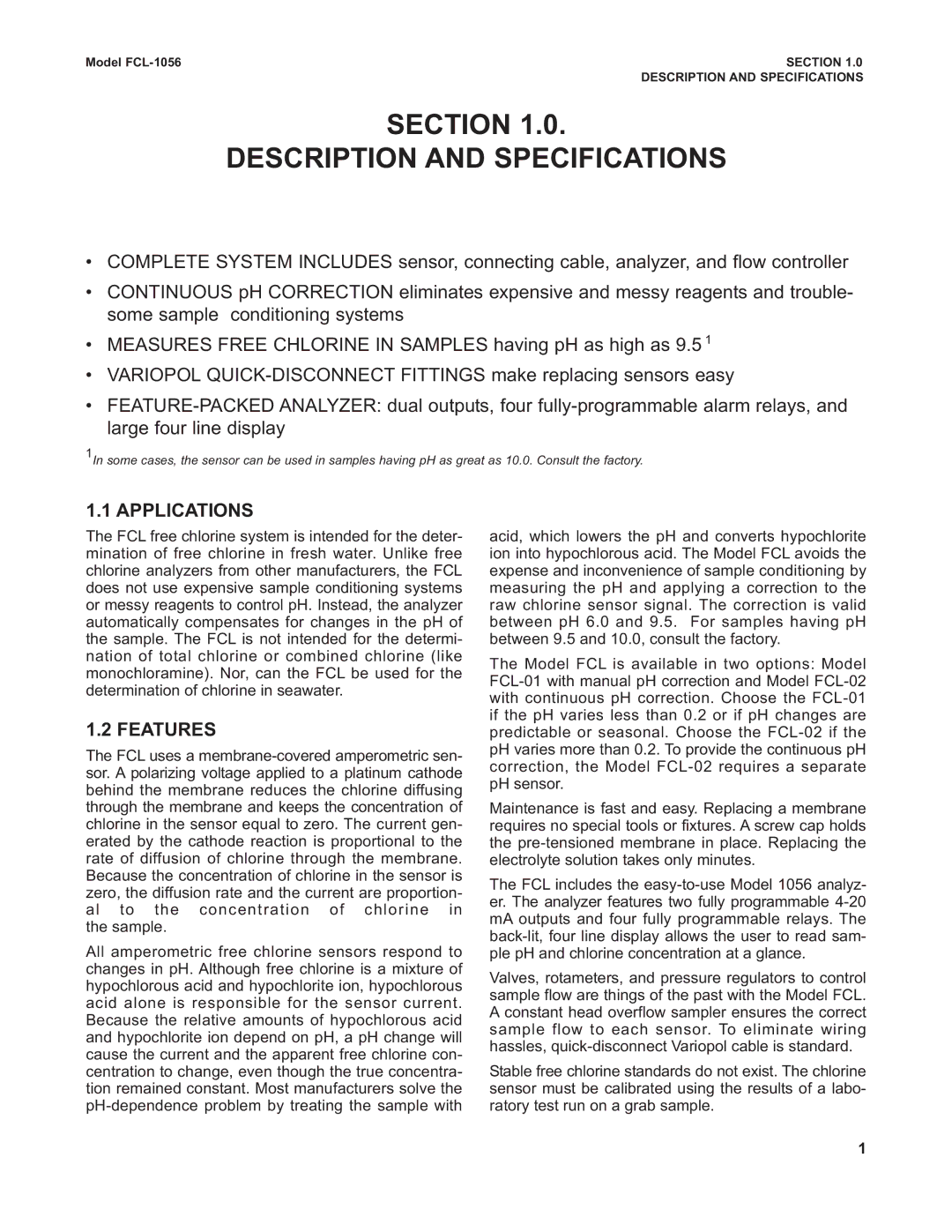Model | SECTION 1.0 |
| DESCRIPTION AND SPECIFICATIONS |
SECTION 1.0.
DESCRIPTION AND SPECIFICATIONS
•COMPLETE SYSTEM INCLUDES sensor, connecting cable, analyzer, and flow controller
•CONTINUOUS pH CORRECTION eliminates expensive and messy reagents and trouble- some sample conditioning systems
•MEASURES FREE CHLORINE IN SAMPLES having pH as high as 9.5 1
•VARIOPOL
•
1In some cases, the sensor can be used in samples having pH as great as 10.0. Consult the factory.
1.1 APPLICATIONS
The FCL free chlorine system is intended for the deter- mination of free chlorine in fresh water. Unlike free chlorine analyzers from other manufacturers, the FCL does not use expensive sample conditioning systems or messy reagents to control pH. Instead, the analyzer automatically compensates for changes in the pH of the sample. The FCL is not intended for the determi- nation of total chlorine or combined chlorine (like monochloramine). Nor, can the FCL be used for the determination of chlorine in seawater.
1.2 FEATURES
The FCL uses a
All amperometric free chlorine sensors respond to changes in pH. Although free chlorine is a mixture of hypochlorous acid and hypochlorite ion, hypochlorous acid alone is responsible for the sensor current. Because the relative amounts of hypochlorous acid and hypochlorite ion depend on pH, a pH change will cause the current and the apparent free chlorine con- centration to change, even though the true concentra- tion remained constant. Most manufacturers solve the
acid, which lowers the pH and converts hypochlorite ion into hypochlorous acid. The Model FCL avoids the expense and inconvenience of sample conditioning by measuring the pH and applying a correction to the raw chlorine sensor signal. The correction is valid between pH 6.0 and 9.5. For samples having pH between 9.5 and 10.0, consult the factory.
The Model FCL is available in two options: Model
Maintenance is fast and easy. Replacing a membrane requires no special tools or fixtures. A screw cap holds the
The FCL includes the
Valves, rotameters, and pressure regulators to control sample flow are things of the past with the Model FCL. A constant head overflow sampler ensures the correct sample flow to each sensor. To eliminate wiring hassles,
Stable free chlorine standards do not exist. The chlorine sensor must be calibrated using the results of a labo- ratory test run on a grab sample.
1
